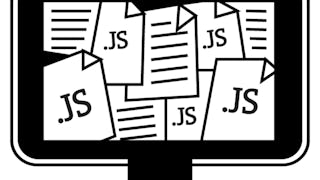Au cours du dernier millénaire, l'éducation reposait sur "la lecture, l'écriture et l'arithmétique" ; aujourd'hui, elle repose sur la lecture, l'écriture et l'informatique. Apprendre à programmer est un élément essentiel de l'éducation de tout étudiant, non seulement dans le domaine des sciences et de l'ingénierie, mais aussi dans celui des arts, des sciences sociales et des humanités. Au-delà des applications directes, c'est la première étape pour comprendre la nature de l'impact indéniable de l'informatique sur le monde moderne. Ce cours couvre la première moitié de notre livre Computer Science : An Interdisciplinary Approach (la seconde moitié est couverte par notre cours Coursera Computer Science : Algorithms, Theory, and Machines). Notre intention est d'enseigner la programmation à ceux qui ont besoin ou veulent l'apprendre, dans un contexte scientifique.

Fin dans 3 jours. Donnez un coup de fouet à votre carrière en bénéficiant de 40 % de réduction sur les cours d'Adobe, d'IBM et d'autres. Économisez maintenant.


(1,286 avis)
Compétences que vous acquerrez
- Catégorie : Principes de programmation
- Catégorie : Animations
- Catégorie : Java
- Catégorie : Optimisation des performances
- Catégorie : Informatique
- Catégorie : Programmation Java
- Catégorie : Débogage
- Catégorie : Algorithmes
- Catégorie : Programmation Informatique
- Catégorie : Pensée informatique
- Catégorie : Développement du programme
- Catégorie : Programmation orientée objet (POO)
- Catégorie : structures de données
Détails à connaître
10 devoirs
Découvrez comment les employés des entreprises prestigieuses maîtrisent des compétences recherchées

Il y a 10 modules dans ce cours
Pourquoi programmer ? Cette conférence répond à cette question de base. Il décrit ensuite l'anatomie de votre premier programme et le processus de développement d'un programme en Java à l'aide de terminaux virtuels ou d'un environnement de développement de programmes, avec un certain contexte historique. La majeure partie de la conférence est consacrée à une couverture approfondie des types de données intégrés de Java, avec des exemples de programmes pour chacun d'entre eux.
Inclus
4 vidéos2 lectures1 devoir1 devoir de programmation
Les instructions if, while et for sont les structures de contrôle fondamentales de Java. Ce cours s'articule autour de programmes courts qui utilisent ces structures pour effectuer d'importantes tâches de calcul. Les exemples incluent le tri, le calcul de la racine carrée, la factorisation et la simulation d'un processus aléatoire. Le cours se termine par un exemple détaillé illustrant le processus de débogage d'un programme.
Inclus
5 vidéos2 lectures1 devoir1 devoir de programmation
Le calcul d'une grande séquence de valeurs du même type est extrêmement courant. Ce cours décrit la structure de données de tableau intégrée à Java qui prend en charge de telles applications, avec plusieurs exemples, dont le mélange d'un jeu de cartes, le test du collecteur de coupons pour le hasard et les marches aléatoires dans une grille.
Inclus
3 vidéos2 lectures1 devoir1 devoir de programmation
Pour interagir avec nos programmes, nous avons besoin de mécanismes pour obtenir des informations du monde extérieur et pour présenter des informations au monde extérieur. Ce cours décrit plusieurs de ces mécanismes : pour le texte, les dessins et l'animation. Parmi les exemples détaillés, citons les dessins fractals qui modélisent des phénomènes naturels et l'animation d'une balle qui rebondit dans la fenêtre d'affichage.
Inclus
4 vidéos2 lectures1 devoir1 devoir de programmation
La programmation modulaire est l'art et la science de diviser un programme en morceaux qui peuvent être développés individuellement. Cet exposé présente les fonctions (méthodes Java), un mécanisme fondamental qui permet la programmation modulaire. Des exemples motivants incluent des fonctions pour la distribution gaussienne classique et une application qui crée de la musique numérique.
Inclus
4 vidéos2 lectures1 devoir1 devoir de programmation
Une fonction récursive est une fonction qui s'appelle elle-même. Cet exposé présente le concept en traitant en détail la fonction règle et des exemples classiques (apparentés), notamment le puzzle des Tours de Hanoï, l'arbre H et des modèles simples du monde réel basés sur la récursivité. Nous montrons un piège courant dans l'utilisation de la récursion, et un moyen simple de l'éviter, qui introduit un paradigme de programmation différent (apparenté) connu sous le nom de programmation dynamique.
Inclus
5 vidéos2 lectures1 devoir1 devoir de programmation
Lorsque vous développez un programme, vous devez être conscient de ses besoins en ressources. Dans cet exposé, nous décrivons une approche scientifique de la compréhension des performances, dans laquelle nous développons des modèles mathématiques décrivant la durée d'exécution de nos programmes et effectuons ensuite des tests empiriques pour les valider. Enfin, nous parvenons à une approche simple et efficace que vous pouvez utiliser pour prédire la durée d'exécution de vos propres programmes qui impliquent des quantités importantes de calculs.
Inclus
5 vidéos2 lectures1 devoir1 devoir de programmation
En Java, vous pouvez créer vos propres types de données et les utiliser dans vos programmes. Dans ce cours et le suivant, nous montrerons comment cette capacité nous permet de considérer nos programmes comme des représentations abstraites de concepts du monde réel. Tout d'abord, nous montrons les mécanismes de l'écriture de programmes clients qui utilisent des types de données. Nos exemples impliquent des abstractions telles que la couleur, les images et les gènes. Ce style de programmation est connu sous le nom de programmation orientée objet car nos programmes manipulent des objets, qui contiennent des valeurs de type données.
Inclus
4 vidéos2 lectures1 devoir1 devoir de programmation
La création de vos propres types de données est l'activité centrale de la programmation Java moderne. Ce cours couvre les mécanismes (variables d'instance, constructeurs, méthodes d'instance et clients de test) et développe ensuite plusieurs exemples, avec en point d'orgue un programme qui utilise une abstraction mathématique quintessentielle (les nombres complexes) pour créer des représentations visuelles du célèbre ensemble de Mandelbrot.
Inclus
4 vidéos2 lectures1 devoir1 devoir de programmation
Nous conclurons le cours par un aperçu des questions importantes concernant les langages de programmation. Pour vous convaincre que votre connaissance de Java vous permettra d'apprendre d'autres langages de programmation, nous montrons des implémentations d'un programme typique en C, C++, Python et Matlab. Nous décrivons les différences importantes entre ces langages et abordons des questions fondamentales, telles que le ramassage des ordures, la vérification des types, la programmation orientée objet et la programmation fonctionnelle, avec un bref contexte historique.
Inclus
5 vidéos1 lecture1 devoir1 devoir de programmation
Obtenez un certificat professionnel
Ajoutez ce titre à votre profil LinkedIn, à votre curriculum vitae ou à votre CV. Partagez-le sur les médias sociaux et dans votre évaluation des performances.
Instructeurs


Offert par
En savoir plus sur Développement de logiciels
 Statut : Essai gratuit
Statut : Essai gratuit
Duke University
 Statut : Essai gratuit
Statut : Essai gratuit
University of London
 Statut : Gratuit
Statut : Gratuit
Princeton University
 Statut : Essai gratuit
Statut : Essai gratuit
University of London
Pour quelles raisons les étudiants sur Coursera nous choisissent-ils pour leur carrière ?




Avis des étudiants
1 286 avis
- 5 stars
83,15 %
- 4 stars
11,33 %
- 3 stars
2,17 %
- 2 stars
1,08 %
- 1 star
2,25 %
Affichage de 3 sur 1286
Révisé le 15 juin 2021
Can't wait to get into the second part of the course. The best programming course ever provided for free of cost. The techniques used are backed by mathematical thinking. It is just awesome.
Révisé le 16 déc. 2024
The 5th star is absent only because the course relies on custom libraries. Not that I'm against that (who am I to say Robert Sedgwick is wrong, right?), but it would have been good, no?
Révisé le 5 avr. 2024
Computer Science: Programming with a Purpose" is highly recommended for those seeking a solid foundation in computer science and programming, regardless of their level of experience.

Ouvrez de nouvelles portes avec Coursera Plus
Accès illimité à 10,000+ cours de niveau international, projets pratiques et programmes de certification prêts à l'emploi - tous inclus dans votre abonnement.
Faites progresser votre carrière avec un diplôme en ligne
Obtenez un diplôme auprès d’universités de renommée mondiale - 100 % en ligne
Rejoignez plus de 3 400 entreprises mondiales qui ont choisi Coursera pour les affaires
Améliorez les compétences de vos employés pour exceller dans l’économie numérique
Foire Aux Questions
Une fois inscrit, vous aurez accès à toutes les vidéos et à tous les travaux de programmation.
Non. Les vidéos de cours, les exercices et les devoirs de programmation sont tous disponibles gratuitement.
Non. Conformément à la politique de l'University Certificates de Princeton, aucun certificat, titre ou rapport n'est délivré dans le cadre de ce cours.

